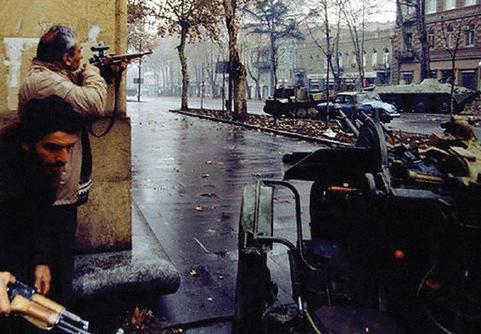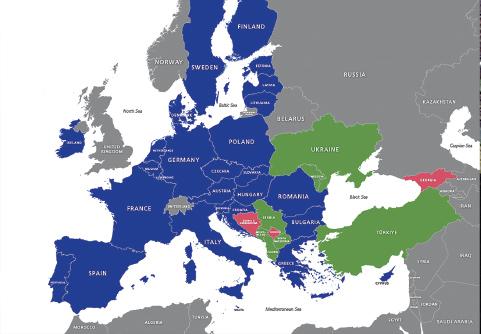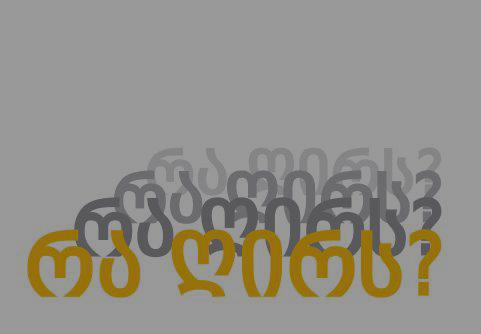
Author : Buba Kudava

You have probably heard concerns that the palaces of the Georgian kings have not been preserved. Or they have but very few of them. You may hear astonishment, scolding and even anger – why didn't they build something we could be proud of, how can you explain to a European that Telavi Palace, for example, was actually a royal residence.
The contrast is striking not only with European palaces, but also with Georgian churches and monasteries – the scale, the space, the decoration, the painting, the location... This has given rise to a number of myths in the history-loving community: the royal palaces almost did not survive; the Georgian kings for some reason did not build proper palaces and were mainly interested in churches and monasteries; the Georgian kings, unlike their foreign counterparts, were humble, and so on and so forth...
The fact is that this is not quite the case.
If we do not have proper knowledge, is that the fault of the kings? Secondly, the humbleness with which many, if not all, of them were endowed had little to do with the size of the royal residence, for the Hall (Darbazi), as the royal palace was called, was first and foremost a symbol of the state and the embodiment of royal authority, and only later did it become an indicator of a king's penchant for luxury.
To begin with, for some reason no one has bothered to undertake a comprehensive study of the royal palaces. What has been preserved, what has not been preserved, where to look for what has not been preserved and how to find it, what was built in what period and what has collapsed, which were the main ones, and which were seasonal or had other functions... These and many similar questions have not yet been studied professionally, the written and material data have not been properly collated, and no one has seriously analyzed the resulting picture.
Most of the remaining palaces have not been studied in detail. Some have not been studied archaeologically, and some have not been studied at all. A considerable number of them have been destroyed, especially those located in cities (urban monuments are particularly painful, especially in our country).
It is understandable that during the Soviet era one could not afford the luxury of a special study of royal residences, but now? It is about time, because the number of royal palaces confirmed by sources is not less than three dozen, if not more. Add to this the buildings unknown to the chroniclers, but identified by archaeologists, and the material is certainly not scarce.
It should also be noted that most surviving, known, discovered, or archaeologically studied palaces do not receive proper publicity, care, evaluation, reconstruction, and restoration. As a result, the public is less aware of their existence, and they are rarely visited by guests. Is it acceptable that the residences of David Aghmashenebeli, his predecessors and successors, for example Tsagvlistava and Nacharmagevi, have not been excavated, studied, restored, decorated, and presented? Or Javakheti? Do schoolchildren, students, and others not ask about such places and hardly anyone knows of their existence? Of course, in some cases only ruins remain, and sometimes the remains themselves are almost untraceable, but doesn't the modern age have the art of virtual reconstruction, which can turn such places into popular centers?
Unfortunately, descriptions of Georgian palaces have survived only in later European sources. Written accounts and sketches do not suggest that the Tbilisi palace of the Kartli kings, for example, was modest. It was fully in keeping with the royal status and the level of political and economic development of the country and the city.
If you take a good look, you'll realize that the palace of Geguti isn't bad either. The surviving or excavated remains of the palace complex of Queen Tamar and her predecessors spread over 2,000 square meters, and the courtyard within the surrounding wall is considerably larger. The height of the walls and the size of the darbazi, which was once covered by a dome, suggest that the other chambers of Georgia's Golden Age would have been equally impressive. It should also be borne in mind that most of the palaces that have survived abroad and whose grandeur we admire are often centuries behind Geguti.
And yet, why have most of the royal palaces not survived?
Firstly, the fact that we were born in a very unstable region and the enemy, which we have never been short of, attacked the royal halls in the first place. A royal residence is like a royal flag, capturing and burning it would be the most vivid demonstration of victory and the best way to morally break the locals. It is wrong to think that the enemy mainly destroyed churches and monasteries. Of course, there were many such cases, but it was much more effective for the invaders to loot, burn and destroy secular centers – fortresses, halls and castles – than ecclesiastical centers, especially if they intended to stay long and it was not in their interest to offend the religious feelings of the population. Destroyed and dysfunctional palaces fell apart of their own accord, and people helped – some with building materials, others by clearing space. The situation was (and still is) different with churches and monasteries: as centers with a sacred function, they are renewed and rebuilt at every opportunity, both damaged and dilapidated ones.
They did not survive because, in the constantly turbulent Caucasus, the regimes of the conquerors, the boundaries of political units, the importance of provinces and cities, and thus the political centers, were often destroyed and new ones created. It was not a stable environment and therefore there could not have been a permanent royal residence that would have remained in the same place for centuries, slowly rebuilt, expanded, and embellished. It seems that the kings of different periods also understood that in an unpredictable environment it was not expedient to make extremely large political and financial investments in building a palace. Frankly, even after the thirteenth and fourteenth centuries, there weren't always enough resources. It is methodologically incorrect to compare our tiny royal chambers of the late Middle Ages with the palaces of the Louvre, Versailles, Windsor, or St Petersburg. Most of the latter have taken on their present appearance in the last 2-3 centuries, and how can one compare the capabilities of the richest and strongest empires in the world at that time with the disintegrated-impoverished-and then conquered and annihilated kingdoms and princedoms?
They have not survived due to irreversible urban processes and the fact that in our country, unlike in many other European and Oriental countries, royalty ended in the early 19th century. For example, the palaces of Tbilisi were sacrificed for the development of the city; not only were they destroyed by Aga-Muhammad Khan, but the Russian Empire also had a hand in it – why would they need symbols and milestones of sovereignty in the Georgian capital?
It was a different epoch in our country in the 19th century when the palaces of the Dadianis, the Chavchavadzes, the Andronikashvilis and the Mukhranbatonis were being built – of course on a scale that suited their owners' abilities and the situation in the country. And where were the kings and their immediate successors? Some resting in their native land, some abroad, and some resting there. . .
Just imagine what the palace of the Georgian kings of the Golden Age looked like in Tbilisi. We know that it stood by the Metekhi Church, overhanging the cliff, and facing Kala Abanotubani. Not a single stone has survived.










